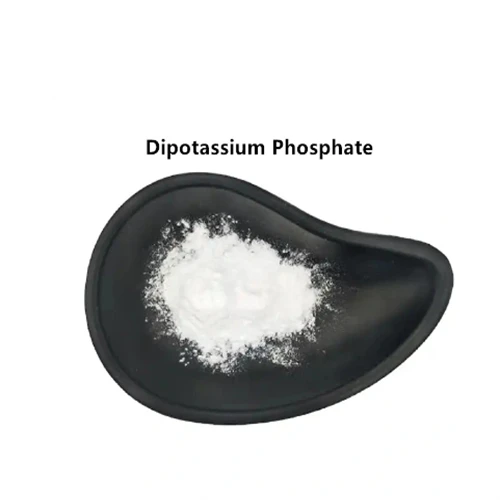Warning: Undefined array key "title" in /home/www/wwwroot/HTML/www.exportstart.com/wp-content/themes/1198/header.php on line 6
Warning: Undefined array key "file" in /home/www/wwwroot/HTML/www.exportstart.com/wp-content/themes/1198/header.php on line 7
Warning: Undefined array key "title" in /home/www/wwwroot/HTML/www.exportstart.com/wp-content/themes/1198/header.php on line 7
Warning: Undefined array key "title" in /home/www/wwwroot/HTML/www.exportstart.com/wp-content/themes/1198/header.php on line 7
- Afrikaans
- Albanian
- Amharic
- Arabic
- Armenian
- Azerbaijani
- Basque
- Belarusian
- Bengali
- Bosnian
- Bulgarian
- Catalan
- Cebuano
- China
- China (Taiwan)
- Corsican
- Croatian
- Czech
- Danish
- Dutch
- English
- Esperanto
- Estonian
- Finnish
- French
- Frisian
- Galician
- Georgian
- German
- Greek
- Gujarati
- Haitian Creole
- hausa
- hawaiian
- Hebrew
- Hindi
- Miao
- Hungarian
- Icelandic
- igbo
- Indonesian
- irish
- Italian
- Japanese
- Javanese
- Kannada
- kazakh
- Khmer
- Rwandese
- Korean
- Kurdish
- Kyrgyz
- Lao
- Latin
- Latvian
- Lithuanian
- Luxembourgish
- Macedonian
- Malgashi
- Malay
- Malayalam
- Maltese
- Maori
- Marathi
- Mongolian
- Myanmar
- Nepali
- Norwegian
- Norwegian
- Occitan
- Pashto
- Persian
- Polish
- Portuguese
- Punjabi
- Romanian
- Russian
- Samoan
- Scottish Gaelic
- Serbian
- Sesotho
- Shona
- Sindhi
- Sinhala
- Slovak
- Slovenian
- Somali
- Spanish
- Sundanese
- Swahili
- Swedish
- Tagalog
- Tajik
- Tamil
- Tatar
- Telugu
- Thai
- Turkish
- Turkmen
- Ukrainian
- Urdu
- Uighur
- Uzbek
- Vietnamese
- Welsh
- Bantu
- Yiddish
- Yoruba
- Zulu
Okt . 07, 2024 10:37 Back to list
'sustainable future of adipic acid: bio-based solutions and'
The Sustainable Future of Adipic Acid Bio-Based Solutions and Innovations
Adipic acid, an essential chemical compound widely used in the production of nylon, plastics, and various textile applications, has been pivotal in shaping modern materials. However, its conventional production methods are notorious for their environmental impacts, primarily stemming from the synthesis process involving petrochemical feedstocks and significant greenhouse gas emissions. This has raised profound concerns about sustainability in the chemical industry, prompting the exploration of bio-based alternatives to secure a more sustainable future for adipic acid production.
The Environmental Challenge
Traditionally, adipic acid is produced through a two-step process using cyclohexane, which is derived from fossil fuels. This method not only consumes non-renewable resources but also emits a substantial amount of nitrous oxide, a greenhouse gas with a global warming potential nearly 300 times greater than carbon dioxide. The urgency to mitigate climate change calls for innovative approaches to reduce the environmental footprint of adipic acid production.
Bio-Based Production Solutions
The shift towards bio-based solutions for adipic acid production presents a promising avenue for sustainability. Researchers are developing methods to derive adipic acid from renewable biological resources, such as lignocellulosic biomass, carbohydrates, and even waste materials. One of the most promising biotechnological pathways involves the use of engineered microorganisms to convert sugars obtained from biomass into adipic acid.
For instance, certain strains of bacteria and yeast have been genetically modified to enhance their productivity of adipic acid from glucose or fructose. This bioconversion process not only utilizes renewable feedstocks but also minimizes harmful emissions, paving the way for a more circular economy. By harnessing fermentation processes, these bio-based solutions can significantly diminish the carbon footprint associated with adipic acid production.
Advances in Biotechnology
'sustainable future of adipic acid: bio-based solutions and'

Recent advancements in synthetic biology and metabolic engineering are facilitating the development of more efficient microbial strains capable of producing adipic acid. Techniques such as CRISPR-Cas9 gene editing allow scientists to customize metabolic pathways, optimizing yield and productivity. Moreover, this approach can lead to the discovery of new, faster-growing microbial strains that can thrive on diverse substrates, further enhancing the economic viability of bio-based adipic acid.
The integration of bioprocessing with traditional chemical manufacturing may also yield hybrid systems that leverage the strengths of both methodologies. This could result in more sustainable processes that are less reliant on fossil fuels while maintaining product quality and performance.
Life Cycle Assessment and Market Trends
The transition toward bio-based adipic acid production is not only an ecological imperative but also aligns with shifting market dynamics. Consumers are increasingly favoring products derived from sustainable practices, compelling manufacturers to seek greener alternatives. Life cycle assessments (LCA) of bio-based adipic acid indicate significant reductions in carbon emissions and energy consumption compared to conventional methods.
As the demand for sustainability escalates, industries are taking steps to adopt bio-based ingredients in their supply chains. Major players in the nylon and plastics sectors are actively investing in research and development for bio-based alternatives. This trend not only supports the transition to greener technologies but also fosters innovation in product applications and formulations.
Conclusion
The journey toward a sustainable future for adipic acid production is marked by the emergence of bio-based solutions that can mitigate environmental impacts, reduce reliance on fossil fuels, and align with global sustainability goals. Ongoing research and technological advancements are essential to unlocking the full potential of bio-based adipic acid. As industries recognize the value of sustainability, the collaboration between biotechnology, chemistry, and environmental stewardship will pave the way for a cleaner, greener, and more sustainable chemical industry. By embracing these changes, we can ensure that adipic acid continues to play a pivotal role in numerous applications while safeguarding our planet for future generations.
Latest news
-
Certifications for Vegetarian and Xanthan Gum Vegetarian
NewsJun.17,2025
-
Sustainability Trends Reshaping the SLES N70 Market
NewsJun.17,2025
-
Propylene Glycol Use in Vaccines: Balancing Function and Perception
NewsJun.17,2025
-
Petroleum Jelly in Skincare: Balancing Benefits and Backlash
NewsJun.17,2025
-
Energy Price Volatility and Ripple Effect on Caprolactam Markets
NewsJun.17,2025
-
Spectroscopic Techniques for Adipic Acid Molecular Weight
NewsJun.17,2025

